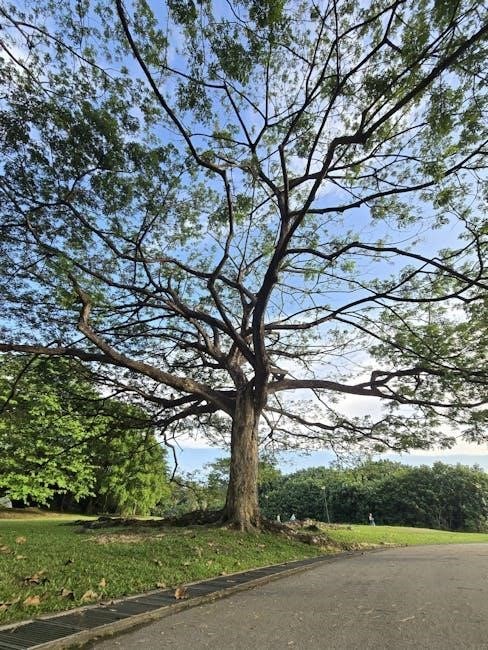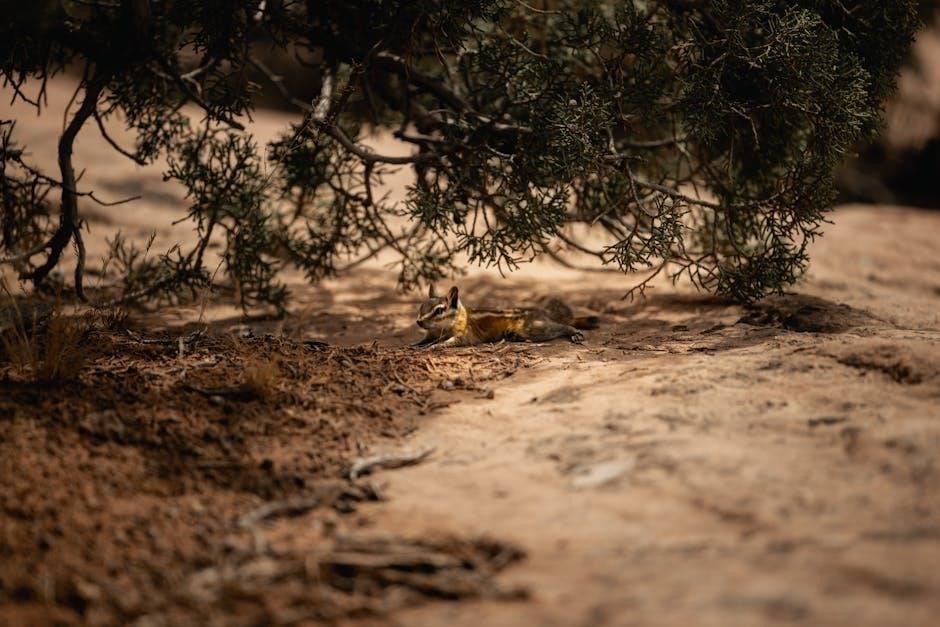Welcome to our Shade of Eranikus guide! This formidable boss is the final challenge in the Sunken Temple, a level 50-60 dungeon in Swamp of Sorrows. Defeating him requires mastering strategic gameplay and handling various phases, making him a memorable encounter in WoW’s Season of Discovery. His loot, like the Rod of Corrosion, makes the effort worthwhile.
Who is Shade of Eranikus?
Shade of Eranikus is a powerful dragon boss in the Sunken Temple, a level 50-60 dungeon in World of Warcraft’s Season of Discovery. Once a noble consort to Ysera, the Dragon Aspect of Nature, Eranikus was corrupted by the influence of Hakkar, the Soulflayer. Now, as the Shade of Eranikus, he serves as the final guardian of the Temple of Atal’Hakkar, fiercely protecting it from intruders. This encounter is divided into four distinct phases, each requiring careful strategy and coordination. Known for his devastating abilities and complex mechanics, defeating Eranikus is a significant achievement, offering valuable loot such as the Rod of Corrosion. His corrupted state and relentless attacks make him a formidable challenge for any raid team.

Location and Dungeon Overview

The Sunken Temple, also known as the Temple of Atal’Hakkar, is a contested dungeon located in the Swamp of Sorrows. Designed for players between levels 50 and 60, this dungeon is a key part of World of Warcraft’s Season of Discovery. The temple is a 20-player raid instance, requiring coordination and strategy to progress through its challenging encounters. Shade of Eranikus serves as the final boss of this raid, making it a climactic conclusion to the dungeon’s trials. The temple’s intricate layout and numerous bosses test players’ skills, with Eranikus being the ultimate test of teamwork and preparation. Its location in the heart of the Swamp of Sorrows adds to the dungeon’s immersive and atmospheric experience.

Battle Phases
The battle against Shade of Eranikus unfolds across four distinct phases, with transitions occurring at 70%, 40%, and 10% health. Each phase introduces new mechanics and intensifies the challenge, requiring adaptability and precise strategy to overcome.
Phase 1: Initial Encounter
Phase 1 begins when Shade of Eranikus is awakened, initiating combat with aggressive melee attacks. Tanks must establish a solid positioning strategy to minimize damage, while healers focus on dispelling Lethargic Poison and managing consistent healing. DPS players should prioritize interrupting Bellowing Roar to prevent unnecessary raid-wide damage. The boss remains stationary during this phase, allowing ranged players to maintain optimal positioning. Melee attackers should be cautious of Acid Rain pools, which can appear randomly and cause significant damage if stood in for too long. Proper debuff management and interrupt rotations are critical during this phase to set the foundation for success in later transitions. The phase concludes when Eranikus reaches 70% health, triggering the first transition and introducing new mechanics.
Phase 2: Transition at 70% Health
At 70% health, Shade of Eranikus transitions into Phase 2, introducing Nightmare Whelplings and Scalebanes as adds that spawn periodically. Tanks must perform a swap to manage the increased damage from these adds, ensuring the boss remains controlled. Healers should be prepared for higher healing demands due to the additional enemies and continued Lethargic Poison debuffs. DPS players should prioritize eliminating the adds quickly to prevent overwhelming the tank and healers. During this phase, Waking Nightmare becomes more frequent, requiring players to move into the green cloud to avoid damage. Additionally, Acid Rain continues to pose a threat, necessitating careful positioning. Proper add management and focus on interrupts will be crucial to maintaining raid stability as the fight progresses toward the next transition at 40% health.
Phase 3: Transition at 40% Health
At 40% health, Shade of Eranikus enters Phase 3, where the encounter becomes increasingly intense. The frequency of Nightmare Whelplings and Scalebanes spawning accelerates, requiring the raid to maintain strong add management. Players must remain vigilant for Acid Rain and Bellowing Roar, which can quickly escalate damage taken. Healers should prioritize dispelling Lethargic Poison from the tank to prevent stacking debuffs, while DPS focuses on eliminating adds before they overwhelm the group. Tank swaps become more critical as the boss’s aggression increases, and the raid must maintain consistent damage to push through this phase. Proper positioning and communication are key to avoiding unnecessary damage. The fight approaches its final stages, with the next transition looming at 10% health, where the encounter reaches its peak intensity.
Phase 4: Final Transition at 10% Health
At 10% health, Shade of Eranikus enters his final, most chaotic phase. The boss’s aggression and ability casting reach their peak, requiring the raid to remain highly focused. Nightmare Whelplings and Scalebanes continue to spawn relentlessly, demanding precise add management. Acid Rain and Bellowing Roar become more frequent, increasing the pressure on the entire raid. Healers must prioritize dispelling Lethargic Poison from tanks to prevent fatal stacks, while DPS must balance add control with boss damage. The tank swap mechanics remain critical, as the boss’s attacks grow more deadly. The raid must maintain discipline, ensuring all mechanics are handled flawlessly to secure a victory. This phase tests the team’s coordination and endurance, making it the ultimate challenge before defeating the boss.
Abilities and Mechanics
Shade of Eranikus employs Lethargic Poison, Bellowing Roar, Waking Nightmare, and Acid Rain to challenge players. These abilities demand precise dispels, interrupts, and positional awareness to manage effectively.
Lethargic Poison
Lethargic Poison is a debilitating debuff applied by Shade of Eranikus, slowing both movement and attack speed significantly. It is periodically cast on players during the encounter, making it crucial for healers to dispel promptly. Failure to remove this debuff can hinder raid performance, especially during phases requiring mobility or high DPS output. The poison’s effects are magnified in later phases when additional mechanics like Waking Nightmare are active. Dispelling Lethargic Poison is essential to maintaining raid viability and preventing potential wipes. Healers should prioritize monitoring and cleansing this debuff to ensure optimal team functionality throughout the fight.
Bellowing Roar
Bellowing Roar is a high-damage ability Shade of Eranikus uses to inflict massive AoE damage to the entire raid. This ability must be interrupted to prevent devastating consequences, as it can lead to wipes if not managed properly. The roar is telegraphed, giving players a brief window to react. Interrupting Bellowing Roar is a shared responsibility, often falling on classes with reliable interrupt mechanisms, such as warriors, rogues, or mages. Failure to interrupt this ability results in significant raid-wide damage, making it a critical mechanic to master. Proper coordination and communication are key to ensuring this ability is consistently mitigated throughout the encounter.
- Assign interrupters beforehand to avoid confusion.
- Use cooldowns if multiple roars occur in quick succession.
- Ensure healers are prepared for the damage spike if an interrupt fails.
Waking Nightmare
Waking Nightmare is a dangerous ability used by Shade of Eranikus during the encounter. When cast, it places a sleep effect on random players, rendering them incapacitated and vulnerable to damage. While asleep, players are stunned and take consistent damage over time, requiring immediate attention from healers. To counter this, affected players must move into the acid cloud generated by another ability, which will wake them up instantly. This mechanic requires good situational awareness, as failing to move to the cloud quickly can lead to unnecessary deaths. Healers should be prepared to dispel the sleep effect if possible, while damage dealers must continue focusing on the boss and adds. Proper coordination ensures minimal disruption to the raid’s progress.
- Assign a spotter to monitor sleeping players and guide them to the acid cloud.
- Healers should prioritize dispelling or healing affected players.
- Damage dealers must balance add control while assisting slept players.

Acid Rain
Acid Rain is a periodic ability used by Shade of Eranikus, creating a damaging area-of-effect cloud on the battlefield. This ability is often triggered during or after the Waking Nightmare phase, coating the ground in a noxious, acidic substance. Players caught in the cloud suffer continuous damage over time, making it crucial to move out of the affected area immediately. The acid clouds persist for a short duration and can stack, increasing damage taken if players linger. To mitigate this, raid members should remain mobile, using the environment to avoid standing in the clouds. Healers must be vigilant, as the cumulative damage can strain the group’s survivability. Additionally, players should be prepared to use resistances or defensive cooldowns if caught in multiple acid clouds.
- Stay mobile and avoid acid clouds at all costs.
- Use potions or abilities with acid resistance if available.
- Healers should focus on topping off players affected by the acid.

Strategies and Tips
Mastering Shade of Eranikus requires precise coordination, with tank swaps, healer focus, and dispels being critical. Managing adds and positioning during phase transitions is essential for success.

- Ensure tanks are prepared for swaps to minimize damage.
- Healers must prioritize dispelling Lethargic Poison quickly.
- Assign players to handle Nightmare Whelplings and Scalebanes effectively.
- Use cleave damage to maximize efficiency during add phases.

Tank Swaps and Positioning
Tank swaps are crucial in the Shade of Eranikus encounter to manage the boss’s devastating abilities and minimize damage taken. Positioning is equally vital to avoid unnecessary harm and optimize raid safety. At least two tanks are required to handle the boss’s attacks effectively, with swaps occurring during specific phases to mitigate damage from abilities like Lethargic Poison and Bellowing Roar.
- Tanks should position the boss facing away from the raid to prevent frontal cone attacks.
- Swap tanks immediately when the active tank is afflicted with Lethargic Poison to avoid stacking damage.
- Ensure proper positioning during Waking Nightmare to avoid overlap with nightmare whelplings.
- Communicate clearly during transitions to maintain control and prevent accidental boss movement.
- Position the boss near the center of the room to allow easy access for healers and DPS.
Proper tank coordination and positioning are key to ensuring a smooth and successful encounter.
Healer Roles and Responsibilities

Healers play a crucial role in the Shade of Eranikus encounter, requiring constant vigilance and coordination. Their primary responsibility is to manage the raid’s health while dispelling harmful debuffs and mitigating incoming damage.
- Dispelling: Healers must prioritize dispelling Lethargic Poison from tanks to prevent stacking damage and ensure smooth tank swaps.
- Raid Healing: Be prepared to handle consistent raid-wide damage, especially during Waking Nightmare, where the entire raid takes damage over time.
- Add Management: Healers should also focus on keeping the raid topped off while dealing with nightmare whelplings and scalebanes.
- Coordination: Communicate with other healers to ensure overlapping coverage during high-damage phases, such as Acid Rain.
- Cool Downs: Use healing cooldowns strategically during critical moments to stabilize the raid.
While focusing on healing, remain aware of your surroundings to avoid mechanics like Acid Rain and Bellowing Roar.
Dispel Strategies
Dispel strategies are vital in the Shade of Eranikus encounter, as the boss frequently applies debilitating debuffs that can escalate damage taken. The primary debuff to manage is Lethargic Poison, which is applied to tanks and must be dispelled immediately to prevent damage stacking.
- Assign Dispellers: Designate Priests or Paladins to focus on dispelling Lethargic Poison from tanks to ensure smooth tank swaps and prevent unnecessary damage.
- Monitor Debuffs: Keep a close eye on raid members for Bellowing Roar, a fear effect that must be dispelled quickly to maintain raid cohesion.
- Prioritize Threats: Focus on dispelling tanks first, as their survival is critical, before addressing other raid members.
- Use Class Abilities: Priests can use Purify Spirit to remove multiple debuffs at once, while Paladins should employ Cleanse to target individual players.
Failure to dispel promptly can lead to increased raid damage and potential wipes, especially during later phases. Stay vigilant and coordinate dispels to maintain control of the encounter.
Handling Nightmare Whelplings and Scalebanes
Nightmare Whelplings and Scalebanes are challenging adds that spawn during the Shade of Eranikus encounter, particularly in later phases. Proper management of these adds is crucial to prevent raid-wide damage and maintain momentum; Tanks should immediately pick up and position these adds away from the raid, while DPS focuses on eliminating them quickly. Mages and Warriors are ideal for handling adds due to their high burst damage capabilities. It is essential to avoid letting these adds accumulate, as their combined damage can overwhelm the tank and healers. Use area-of-effect spells like Consecration or Flamestrike to control and dispatch them efficiently. Neglecting these adds can lead to increased raid damage and potential wipes, especially during phases with acid rain or nightmare incursions. Coordination and prioritization are key to success in managing these adds effectively.
Loot and Rewards
Defeating Shade of Eranikus rewards valuable loot, with the Rod of Corrosion being a standout item. This powerful weapon is a best-in-slot choice for Mages, Priests, and Warlocks, offering superior Nature Resistance.
Notable Loot: Rod of Corrosion
The Rod of Corrosion is the most sought-after item from Shade of Eranikus, offering exceptional Nature Resistance, making it a best-in-slot weapon for Mages, Priests, and Warlocks. This powerful staff is crucial for classes relying on spell damage, providing a significant boost in raids and dungeons. Its unique properties make it a highly coveted drop, ensuring it remains a valuable asset in any player’s arsenal. Obtaining the Rod of Corrosion is a highlight of defeating Eranikus, as it enhances performance in challenging content. Players often prioritize this loot due to its versatility and strength in both PvE and PvP scenarios.

Preparation
Ensure a well-rounded group with at least 2 tanks, 4 healers, and reliable DPS. Coordinate strategies for add management and tank swaps. Bring necessary potions and consumables for sustained combat.
Required Group Composition
A successful encounter with the Shade of Eranikus demands a well-rounded group. A minimum of two tanks is essential to handle the boss’s intense damage and facilitate tank swaps. Four healers are recommended to maintain consistent healing throughout the multiple phases and manage the additional stress from adds. For DPS, prioritize classes with strong cleave capabilities, such as warriors or mages, to efficiently handle the Nightmare Whelplings and Scalebanes. A balance of melee and ranged DPS is ideal for flexibility. Ensure your group includes players capable of interrupting and dispelling key abilities. A prot paladin or frost mage can significantly enhance your setup for both tanking and add control. Proper coordination and role distribution are crucial for overcoming this challenging encounter.
Gear Recommendations
Preparing for the Shade of Eranikus encounter requires optimal gear to ensure survival and effectiveness. Tanks should prioritize high-stamina, armor, and threat-generating gear to handle the boss’s aggressive attacks. Healers need mana-efficient and high-healing gear to sustain throughput during prolonged phases. DPS players should focus on high-damage output with stamina for survivability. Nature Resistance gear is beneficial, though not mandatory, to mitigate some of the boss’s abilities. Enchants and gems that enhance stamina, intellect, or attack power are highly recommended. Ensure your group is well-equipped with appropriate gear for their roles, as the fight demands both durability and strong performance. Proper gear preparation significantly improves your chances of success in this challenging encounter.
Potions and Consumables
Potions and consumables play a crucial role in the Shade of Eranikus encounter, enhancing your group’s survival and performance. Tanks should use Elixir of Fortitude or Greater Holy Protection to boost stamina and armor. Healers and DPS benefit from Mana Potions to maintain their mana reserves during prolonged phases. Consumables like Food Buffs (e.g., +25 stamina or intellect) and Flasks (e.g., Flask of Supreme Power) provide sustained benefits. Additionally, using Restorative Potions can help recover health during critical moments. Ensure your group stocks up on these items to maximize their effectiveness and improve your chances of success. Proper use of potions and consumables can make a significant difference in this challenging boss fight.
Common Mistakes to Avoid
- Failing to manage nightmare whelplings and scalebanes, leading to overwhelming add pressure.
- Improper tank positioning, causing unnecessary damage from acidic spit attacks.
- Not handling phase transitions effectively, resulting in increased raid-wide damage.
Ignoring Add Management
One of the most critical mistakes in the Shade of Eranikus encounter is neglecting to manage the nightmare whelplings and scalebanes effectively. These adds spawn during specific phases and can overwhelm the raid if left unchecked. Nightmare whelplings, for instance, will relentlessly attack random players, causing significant damage over time. Similarly, scalebanes will focus on the tanks, increasing their damage taken and straining the healing team. Failing to assign a dedicated group to handle these adds can lead to wipes, as the boss’s damage output coupled with uncontrolled adds becomes unsustainable. Proper add management requires clear communication, quick reactions, and a well-coordinated team to ensure these threats are neutralized before they escalate the encounter’s difficulty. This oversight is a common pitfall for underprepared groups.
Improper Tank Positioning
Improper tank positioning is a frequent oversight that can drastically increase the difficulty of the Shade of Eranikus encounter. Tanks must maintain optimal positioning to mitigate the boss’s abilities effectively. During Phase 1, failing to position the boss correctly can result in unnecessary damage from abilities like Bellowing Roar and Lethargic Poison. Additionally, improper positioning during Phase 2 and beyond can lead to the boss facing the wrong direction, causing area-of-effect attacks to hit the raid. This mismanagement can also hinder the effectiveness of tank swaps, allowing the boss’s deadly abilities to focus on a single tank for extended periods. Proper positioning ensures that the boss’s attacks are directed away from the raid, minimizing damage and allowing healers to maintain stability; Neglecting this fundamental aspect can lead to avoidable wipes and increased strain on the healing team.
Overcoming Shade of Eranikus demands precise strategy, teamwork, and mastery of his multi-phase mechanics. Success brings rewarding loot and a sense of accomplishment in this iconic encounter.
Final Tips for Success
To triumph over Shade of Eranikus, prioritize preparation and a deep understanding of his mechanics. Ensure your team is well-coordinated, with clear roles for tanks, healers, and DPS. Tank swaps should be seamless to minimize damage from his abilities, while healers must stay vigilant with dispels and raid-wide healing. DPS players should focus on maximizing damage during lulls in add spawns while managing Nightmare Whelplings and Scalebanes effectively. Always keep an eye on your positioning to avoid Acid Rain and Waking Nightmare effects. Communication is key—call out debuffs, add spawns, and phase transitions. Use potions and consumables strategically, especially during critical phases. Finally, stay patient and persistent, as mastering this encounter requires practice and teamwork. With proper execution and coordination, your group will emerge victorious.
Additional Resources
For further insights and strategies, check out detailed guides on platforms like Icy Veins and Warcraft Tavern, which offer in-depth breakdowns of Shade of Eranikus’ mechanics and optimal group compositions. YouTube hosts numerous video guides and kill tutorials, providing visual references for each phase and ability. Additionally, Classic WoW forums and communities are great for discussing strategies and learning from experienced players. Utilize tools like WeakAuras to track debuffs and cooldowns, ensuring your team stays coordinated. Lastly, consult your server’s guild resources or recruitment channels for experienced players who can share tips and help refine your approach. These resources will complement your preparation and enhance your chances of success in the Sunken Temple raid.